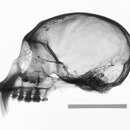en
names in breadcrumbs


Hylobates means "dweller in the trees".
Kloss' gibbons are known for their magnificent vocal communication. Females tend to have the most distinctive calls with a slow rise and fall, interrupted by a trill sequence. Male calls consist of moans and "quiver-hoots". Males will sing solos from 10 minutes up to 2 hours in both the pre- and post-dawn hours. Often, breeding pairs form duets together 2 to 3 hours after dawn, with the female's contribution lasting about 15 minutes. Occasionally, the young will join in the duet of their parents. It has been hypothesized that the duets are a means of intimidating neighbors to defend their territory and/or as a way to maintain social organization. Studies have shown that both males and females can be identified by the individuality of their calls, with each animal having its own unique voice.
Kloss' gibbons also use chemical, tactile, and visual modes of communication. Social grooming is an important form of social bonding and facial and body gestures are important ways of communicating among gibbons. Another important interaction is play behavior centered on the infant.
Communication Channels: visual ; tactile ; acoustic ; chemical
Other Communication Modes: duets ; choruses
Perception Channels: visual ; tactile ; acoustic ; chemical
The IUCN lists H. klossii as vulnerable due to the extent of occurrence and/or quality of habitat. The status of H. klossii is threatened because of an increased human population, hunting, and deforestation. CITES lists H. klossii on their Appendix I list.
US Federal List: no special status
CITES: appendix i
IUCN Red List of Threatened Species: endangered
There are no known negative impacts of Kloss' gibbons.
Kloss' gibbons are a potential source of ecotourism dollars, as well as being important parts of a healthy ecosystem from which humans benefit.
Kloss' gibbons act as important seed dispersers in their forest ecosystems.
Ecosystem Impact: disperses seeds
Kloss' gibbons are primarily frugivorous, preferring to eat fruits with high sugar content, such as figs, 72 percent of the time. They will also consume flowers, eggs, small vertebrates, and insects 25 percent of the time. This species tends to spend time apart from members of its own group while feeding -- up to 50 meters at times. In the wild, Kloss' gibbons have been observed to spend a large amount of feeding time searching for arthropods.
Animal Foods: birds; mammals; amphibians; reptiles; eggs; insects
Plant Foods: leaves; fruit; flowers
Primary Diet: herbivore (Frugivore )
Kloss' gibbons, Hylobates klossi, are found in Siberut, Sipura, North Pagai, and South Pagai in the Mentawai Islands, western Sumatra, and Indonesia.
Biogeographic Regions: oriental (Native )
Kloss' gibbons can be found in the upper canopy of semi deciduous monsoon forests and tropical evergreen forests.
Habitat Regions: tropical ; terrestrial
Terrestrial Biomes: rainforest
The lifespan of Kloss' gibbons may be as long as 25 years. Other members of the genus Hylobates are known to live upwards of 44 years in captivity.
Range lifespan
Status: wild: 25 (high) years.
Range lifespan
Status: captivity: 37 (high) years.
Hylobates klossii has long forearms for brachiation. These tail-less, slender primates have dense, glossy, black hair with buttock pads and a large throat sac located under the chin. The throat sac helps to enhance their calls. Females are slightly larger than males, with males weighing about 5.6 kg and females weighing about 5.9 kg. Head and body length ranges from 440 mm to 635 mm.
Average mass: 5.7 kg.
Range length: 440 to 635 mm.
Other Physical Features: endothermic ; homoiothermic; bilateral symmetry
Sexual Dimorphism: female larger
Average mass: 5900 g.
Predators of Kloss' gibbons include leopards, snakes, and large birds of prey. Their social system means that many individuals are vigilant and will warn other members of the troup of impending danger.
Known Predators:
Kloss' gibbons are monogamous. Mated pairs of males and females, with their young, form the basic social unit.
Mating System: monogamous
The gestation period of H. klossii lasts 7 to 8 months, with one infant born every 2 to 3 years. Weaning occurs early in the second year of life. Kloss' gibbons reach sexual maturity at 6 to 7 years of age. Young do not usually disperse from their family unit until they reach late adolescence. The testicular sac in males is covered by short, sparse hairs. In females, the labia majora is prominent, making it difficult to distinguish males from females in the field.
Breeding interval: One infant is born every 2 to 3 years to an individual female.
Breeding season: These animals breed throughout the year.
Average number of offspring: 1.
Range gestation period: 7 to 8 months.
Range weaning age: 24 (high) months.
Range age at sexual or reproductive maturity (female): 6 to 7 years.
Range age at sexual or reproductive maturity (male): 6 to 7 years.
Key Reproductive Features: iteroparous ; year-round breeding ; gonochoric/gonochoristic/dioecious (sexes separate); sexual ; fertilization ; viviparous
Average number of offspring: 1.
Males and females participate in caring for the young. Around the time of adolescence, males and females will disperse from their parent's group. Often parents will assist dispersing adolescents in obtaining territory by accompanying the young into new territory and threatening those occupying the new area.
Parental Investment: altricial ; pre-fertilization (Provisioning, Protecting: Female); pre-hatching/birth (Provisioning: Female, Protecting: Female); pre-weaning/fledging (Provisioning: Female, Protecting: Male, Female); pre-independence (Provisioning: Female, Protecting: Male, Female); post-independence association with parents; extended period of juvenile learning